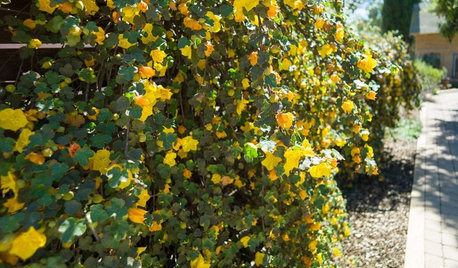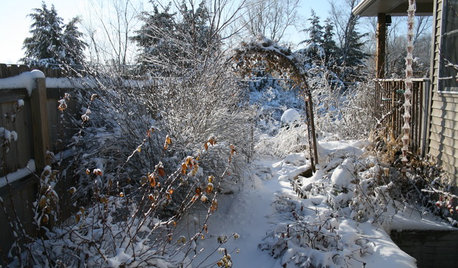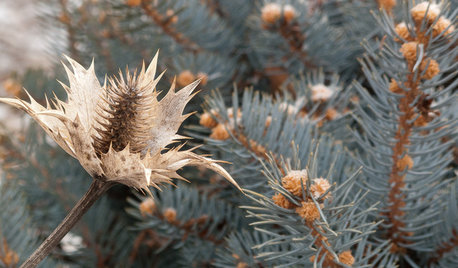large amount of sap during winter pruning bad?
ikea_gw
14 years ago
Related Stories

WINTER GARDENINGPruning Secrets for Exquisite Roses
Encourage gorgeous blooms year after year with this time-tested advice on how to prune your rosebush in winter for health and shape
Full Story
GARDENING GUIDESTidy Up Sprawling Native Shrubs With These Pruning Tips
Sound horticultural pruning methods work for native and nonnative plants alike
Full Story
HEALTHY HOMEWhat to Know About Controlling Dust During Remodeling
You can't eliminate dust during construction, but there are ways to contain and remove as much of it as possible
Full Story
HOUSEKEEPING10 Chores You Can Whip Through During Commercials
Use ad time for getting tasks done, and it’s like fast-forwarding your house into cleanliness
Full Story
GARDENING FOR BIRDSFeed the Birds: 6 Plants for Abundant Winter Berries
Be kind to your fair feathered friends during lean food times by planting a shrub or tree loaded with nutritious snacks
Full Story
LIFE6 Ways to Beat the Winter Blahs
Snow and dark days dampening your spirits? These ideas will have you looking on the bright side
Full Story
WINTER GARDENINGInspiring Winter Scenes From the Denver Botanic Gardens
Use seed heads, bare branches and grasses to design lovely garden displays when the ground is frozen
Full Story
HOUSEPLANTSHow to Force Amaryllis Bulbs Indoors
Enjoy vibrant red blossoms even as gardens turn snowy white, by teaching this hardy repeat performer to ignore the calendar
Full Story
GARDENING GUIDESGarden Myths to Debunk as You Dig This Fall and Rest Over Winter
Termites hate wood mulch, don’t amend soil for trees, avoid gravel in planters — and more nuggets of garden wisdom
Full Story
LIFEHard Winter? 9 Ways to Battle Cabin Fever
We know a lot of you are trapped where it just won’t stop snowing. Here are some ways to survive
Full Story





arktrees
mafle
Related Professionals
Arlington Landscape Architects & Landscape Designers · Fort Lee Landscape Architects & Landscape Designers · Tempe Landscape Contractors · Athens Landscape Contractors · Cudahy Landscape Contractors · Eagle Landscape Contractors · Harrisburg Landscape Contractors · Melrose Landscape Contractors · Quincy Landscape Contractors · Ringwood Landscape Contractors · Greentree Fence Contractors · Memphis Fence Contractors · North Potomac Fence Contractors · Verona Fence Contractors · Zion Fence Contractorsarktrees
whaas_5a
mafle
ikea_gwOriginal Author
gardengal48 (PNW Z8/9)
whaas_5a
brian_zn_5_ks
pinballer3
whaas_5a
gardengal48 (PNW Z8/9)